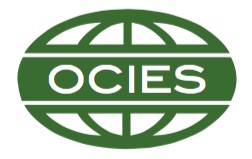Improving Outcomes for Refugee Children: A case study on the impact of Montessori education along the Thai-Burma border
Keywords:
Montessori, child-centred education, refugees, ASQ, pedagogy, child development, displaced children, Burma, ThailandAbstract
There are 25 million displaced children worldwide, and those receiving schooling are often educated in overcrowded classrooms. Montessori is a child-centred educational method that provides an alternative model to traditional educational approaches. In this model, students are able to direct their own learning and develop at their own pace, working with materials rather than in supervised groups or with direct teacher instruction. Because most children are working alone, teachers have more time to work one-on-one with children even when student-teacher ratios are quite large. This gives teachers increased opportunity to tailor their teaching to the specific needs and strengths of each student. We conducted an evaluation of Montessori classroom conversion for displaced students on the Thai-Myanmar border. We administered the Ages and Stages Questionnaire (ASQ) to 66 children before and after classroom conversion and across treatment and control classroom conditions. We then conducted difference in difference testing. All domains showed meaningful improvements in ASQ scores, with the Montessori students gaining 18 points relative to the traditional students (p = 0.33). However, only the personal-social domain of the ASQ was statistically significant (8.8 point gain for the Montessori students relative to the control, p < 0.05) in our underpowered sample.
Downloads
Published
Issue
Section
License
The International Education Journal: Comparative Perspectives is the official journal of the Oceania Comparative and International Education Society. The IEJ, (ISSN 1443-1475), publishes a general volume bi-annually in July and December and also publishes Special Editions occasionally. It is a free, open-access scholarly journal, managed by volunteers. There are no article processing charges, or any charges to authors.
In relation to intellectual property, as of 2020, the IEJ: CP claims only first publication rights; copyright of all work published in the journal remains with the authors under Creative Commons copyright license CC-BY-ND (4.0). Author(s) retain all rights to their works, ensuring that reference to the International Education Journal: Comparative Perspectives is clearly stated on any copies made or distribution. Submissions must not involve third parties with a claim to copyright, and be the sole work of the author(s). It is the responsibility of the author(s) to secure permission to reproduce photographs, illustrations, figures or tables. Single images, tables or figures can be re-used . If more than a single image or table are to be re-used authors must attribute first publication to IEJ: CP notify the IEJ: CP Editor. Authors may also make derivative works which are subject to these limitations.
See https://creativecommons.org/licenses/by-nd/4.0/ for more detail.
Re-distributed or used material must be referenced to the International Education Journal: Comparative Perspectives.
